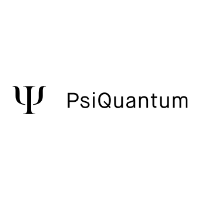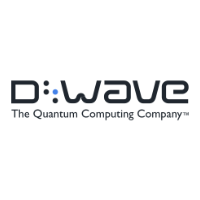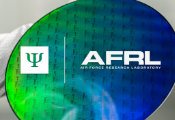Researchers Unlock Hidden Pathway to Tunable Magnetic Devices
Researchers Unlock Hidden Pathway to Tunable Magnetic Devices
A new study published in Nature Communications April 7 could reshape the future of magnetic and electronic technology. Scientists at Rice University have discovered how a disappearing electronic pattern in a quantum material can be revived under specific thermal conditions. The finding opens new doors for customizable quantum materials and in-situ engineering, where devices are manufactured or manipulated directly at their point of use.
New Nanoscale Technique Unlocks Quantum Material Secrets
New Nanoscale Technique Unlocks Quantum Material Secrets
Argonne researchers have developed a cutting-edge technique to study atomic vibrations near material interfaces, opening doors to new quantum applications in computing and sensing.
Seeing With Entangled Quantum Pairs
Seeing With Entangled Quantum Pairs
Zooming in to the “pixels of reality”: the electron microscope helps us to do that. However, it is unsuited for particularly sensitive targets. A Vienna-based research group intends to avoid this problem with a quantum optics trick and thereby set new standards in high-resolution microscopy.
Using Electron Microscopy to Understand Quantum Behavior
Using Electron Microscopy to Understand Quantum Behavior
A research team led by Pacific Northwest National Laboratory (PNNL) scientists will use a combination of advanced electron microscopy, materials synthesis, and theoretical techniques to study quantum behavior in materials at the atomic level. They will use model material systems to study how electrons and their properties, such as spin and orbit, move through the materials. The project will focus on understanding transport phenomena, collectively known as Hall effects. Hall effects occur when an electric current flows through a material, typically in the presence of an external magnetic field, resulting in a build up of charge or spin in a direction perpendicular to the current flow.
SQMS Scientists Gain Insight Into the Material Defects That Cause Errors in Quantum Computing
SQMS Scientists Gain Insight Into the Material Defects That Cause Errors in Quantum Computing
A team of researchers, led by scientist Lin Zhou of Ames National Laboratory, has made important progress towards understanding the role of surface oxides in improving quantum computing circuits performance. Surface oxides are a primary cause of decoherence, or loss of quantum properties in quantum circuits. The team is part of a larger effort by the Superconducting Quantum Materials and Systems Center (SQMS) to improve quantum computers.
New Light-Induced Material Shows Powerful Potential for Quantum Applications
New Light-Induced Material Shows Powerful Potential for Quantum Applications
In a recent breakthrough, researchers at the U.S. Department of Energy’s (DOE) Argonne National Laboratory and Northern Illinois University discovered that they could use light to detect the spin state in a class of materials called perovskites (specifically in this research methylammonium lead iodide, or MAPbI3). Perovskites have many potential uses, from solar panels to quantum technology.
New Technique Could Unlock Potential of Quantum Materials
New Technique Could Unlock Potential of Quantum Materials
A research team led by the Department of Energy’s Oak Ridge National Laboratory has devised a unique method to observe changes in materials at the atomic level. The technique opens new avenues for understanding and developing advanced materials for quantum computing and electronics.
Studying "Excitons" in a Novel Magnetic Material
Studying "Excitons" in a Novel Magnetic Material
A research group led by scientists at the U.S. Department of Energy’s (DOE) Brookhaven National Laboratory has uncovered details about the formation and behavior of mobile, microscopic, particle-like objects called “excitons” in a class of materials known as van der Waals magnets.
Toward a Quantum Electron Microscope: A Compact Pulse Hollow Cone Hybrid TEM/SEM by CityUHK to Revolutionise Electron Microscopy
Toward a Quantum Electron Microscope: A Compact Pulse Hollow Cone Hybrid TEM/SEM by CityUHK to Revolutionise Electron Microscopy
A research team from City University of Hong Kong (CityUHK) is working on a new quantum electron microscope (QEM) to eliminate interaction between the electron beam and sample. At this stage, the team is using partial key components of QEM to design a compact hybrid transmission and scanning electron microscope that can operate at room temperature, ushering in a new era for electron microscopes. The CityUHK team plans to manufacture and commercialise this groundbreaking innovation within three years.
Structured Electrons With Chiral Mass and Charge
Structured Electrons With Chiral Mass and Charge
Physicists in Konstanz (Germany) have discovered a way to imprint a previously unseen geometrical form of chirality onto electrons. The electrons are shaped into chiral coils of mass and charge.


























